After relocating to another franchise, one won’t always be able to repeat the same performances that made them so attractive to their new city. Whether because the team they moved to is weaker than the one they left, they are facing natural and unavoidable regression, or they just can’t find the right fit within the organization’s surroundings or system. It’s not that professional athletes choose to be ineffective, but it happens.
However, when a proven netminder playing through their prime is acquired by an organization either ready to contend or hoping to break free from a rebuild, it’s fair to anticipate that their presence will influence increased success.
RELATED: 3 Big-Name NHL Netminders Maple Leafs Should Avoid Pursuing
Unfortunately for these three clubs, who each thought they found their missing piece this past offseason, things haven’t quite panned out in that manner. Made even more surprising by the backstories that preceded such drastic year-over-year declines for each, thus far through 2022-23.
Ottawa Senators: Cam Talbot
Amid a busy NHL offseason, the Ottawa Senators found a way to stand out with a few of the league’s more aggressive moves. Clearly, by infusing stars like Alex DeBrincat and Claude Giroux at this point in their plan, Senators’ general manager (GM) Pierre Dorion felt his team was closer to contending than their 26th-place finish in 2021-22 suggested.
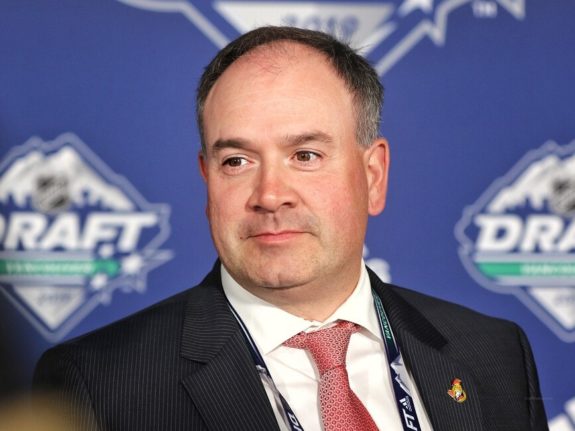
Typically, one of the most important parts of any winning equation in hockey is solid goaltending. An area of Ottawa’s game that had seen its share of struggles the past few seasons. So, after parting ways with Matt Murray — who failed to live up to his hype as a Senator — Dorion had a spot to fill.
Given the newfound level of experience throughout the rest of the lineup, who better to tend their net than 35-year-old Cam Talbot?
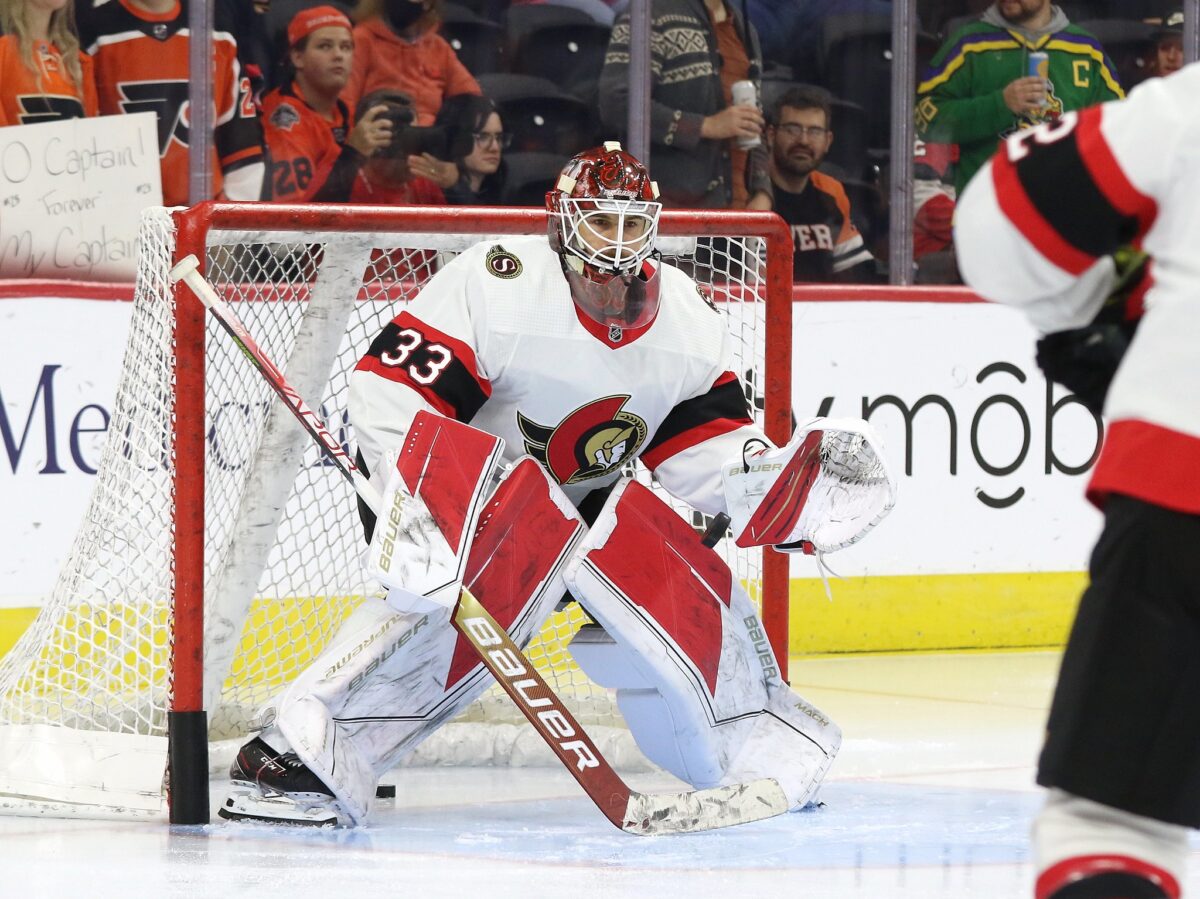
Entering his 10th season, Talbot has enjoyed a noticeable resurgence of late, spanning his time rebounding on the Calgary Flames in 2019-20 to spending 2020-21 and 2021-22 winning with the Minnesota Wild.
During that specific timeframe, Talbot accumulated a personal record of 63-30-10, earning a .914 save percentage (SV%), 2.69 goals-against average (GAA), and seven shutouts. Interestingly, though, he was unable to achieve a positive goals saved above expected per 60 (GSAx/60) within any of those seasons. Research that Dorion shouldn’t have ignored before agreeing to take on his $3.67 million cap hit in 2022-23.
“Cam is experienced and provides us with greater goaltending stability heading into next season,” Senators general manager Pierre Dorion said. “He was instrumental in helping Minnesota reach the playoffs in each of his two seasons with the Wild. The tandem of he and Anton Forsberg sets us up nicely for the upcoming year.”
Players typically elevate in a contract year, with an opportunity to prove their value and maximize their next contract. Unfortunately, for both the Senators and Talbot, things aren’t working out that way for the pending unrestricted free agent (UFA).
Following a less-than-ideal start to his time in Ottawa, which included being sidelined as the season got underway, Talbot hasn’t fared very well upon his return. He’s now 1-5-0, with a 2.83 GAA and .910 SV%. Numbers that are nowhere near the top of the NHL, let alone among his teammates.
Although he’s found a way to earn a positive GSAx/60, Talbot’s 0.126 is the lowest of the three goalies Ottawa has started thus far in 2022-23. In fact, Anton Forsberg already owns a better record and GSAx/60, which suggests that he’s a more logical choice as Ottawa’s starter at the moment.
30-year-old Forsberg had already proven he was ready to take on the No. 1 role in Ottawa with his stellar stat line in 2021-22. Despite the team’s collective failures last year, Forsberg strung together a strong campaign that included a winning record and a cumulative GSAx of 8.5.
Furthering the point that looking to Talbot as their answer, when they already had one in-house, wasn’t the most logical decision for this franchise heading into 2022-23. That they currently rank second-last in the entire league, which is even worse than they fared last year, makes that assessment far less subjective.
Washington Capitals: Darcy Kuemper
When Washington Capitals’ GM Brian MacLellan set out to scrap their entire goaltending strategy from last season, despite having had two capable netminders with winning records and modest metrics, it was a no-brainer that adding the reigning Stanley Cup champion would offer an upgrade. Right?
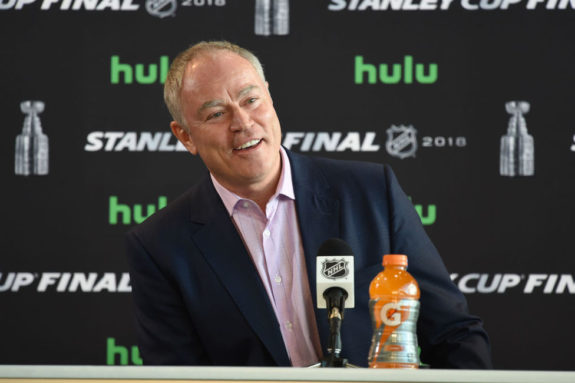
As Vítek Vaněček and Ilya Samsonov headed to new home rinks — where both are now thriving, at that — the Capitals were looking to revert to a traditional No. 1 and No. 2 setup. Leading the way as their starter in 2022-23 was going to be Darcy Kuemper, with Charlie Lindgren maintaining the backup title he’s held throughout his career.
A solid plan, on paper. Kuemper being fresh off climbing to the peak of the league should have meant he had all the momentum and motivation necessary to remain there. A perfect mindset to assist an aging Capitals team, looking to squeeze out as much winning as possible while Alexander Ovechkin can still score at will.
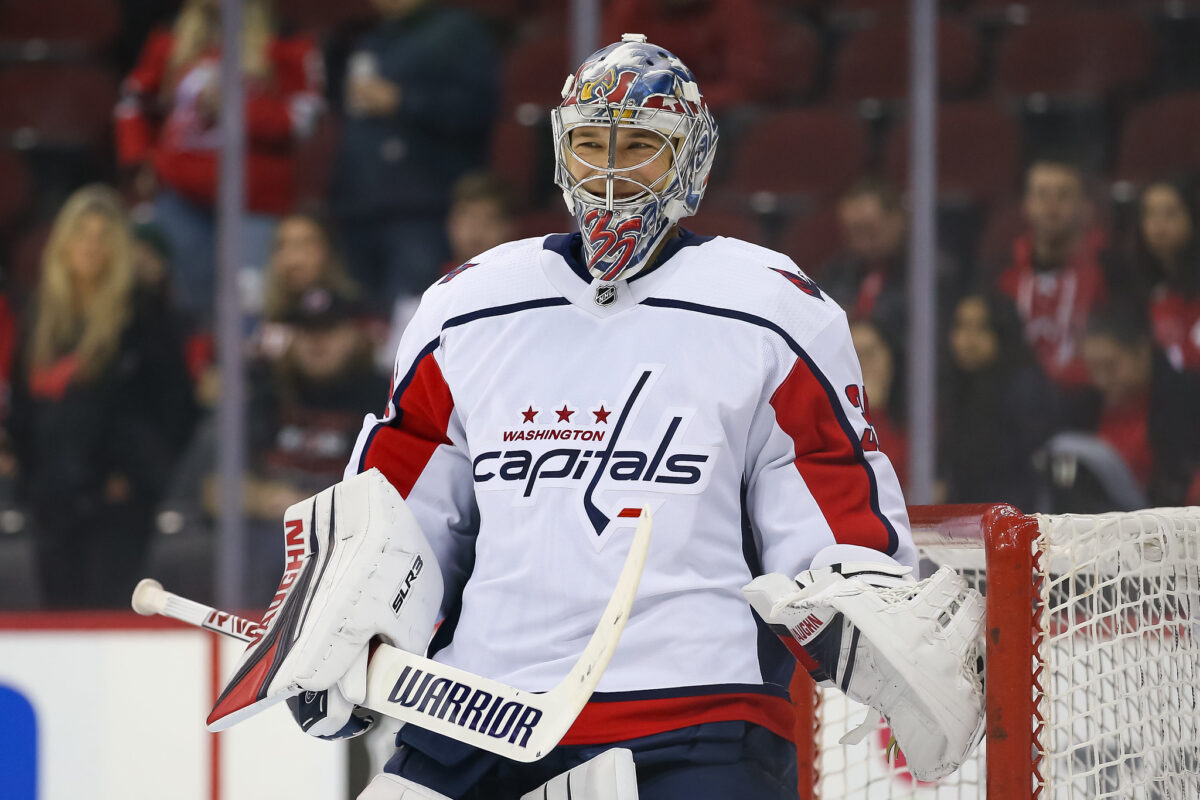
That said, it’s relevant to reflect on Kuemper’s rise when alluding to the fact that he currently appears to be falling from it in real-time.
Having not only compiled a winning record with the lowly Arizona Coyotes throughout his four years there, Kuemper also earned a .920 SV%, 2.43 GAA, and 10 shutouts through 121 contests with the club between 2018-19 to 2020-21. As such, it made a lot of sense that he quickly became one of the NHL’s most sought-after goalies.
Given what Kuemper had accomplished on a futile Coyotes lineup, it was plausible to presume that he’d achieve greater heights on a contender. Which he did, by helping the Avalanche capture their third Cup.
Fast forward to the future, again, and it’s hard to blame the Capitals for attempting to strike gold in the same manner. They appeared to have the rest of their star-studded roster aligned, with a potent forward group and dynamic blue line, so adding another to protect their net should have worked to strengthen that build.
“I think we know what Darcy is and what he’s done and what he’s accomplished,” GM Brian MacLellan told reporters Thursday as training camp opened. “If you’re making a list going into free agency, you’d want the Cup, the experience, he’s got size, he’s got a track record, he’s played in different types of teams, too — championship-quality teams and non-playoff teams. So he’s got a wealth of experience that I think we’re all gonna benefit from.”
Currently battling to better some of his worst numbers to date, a .908 SV%, 2.77 GAA, and 0.066 GSAx/60 aren’t doing much in the way of justifying his $5.25 million paycheque. Nor are those the type of metrics that help the Capitals improve upon their former approach, considering that both Vaněček and Samsonov are currently outperforming the Cup-winner in every regard with their new franchises.
Meanwhile, Kuemper’s impact has been so ineffective in Washington that the Capitals currently face a daunting uphill battle throughout the Metropolitan Division. Not only are they far from being looked at as a divisional threat, but they don’t even own a wild card spot at the moment.
While there’s more to blame than Kuemper’s inconsistency, Washington’s offseason investment hasn’t offered an ideal return. It seems patience and loyalty toward who they had would have helped the Capitals in a way that seeking the biggest name available hasn’t.
Edmonton Oilers: Jack Campbell
As Connor McDavid continually reaches new tiers of dominance, there’s seemingly been one thing holding his Edmonton Oilers back from collectively succeeding in the same manner — goaltending.
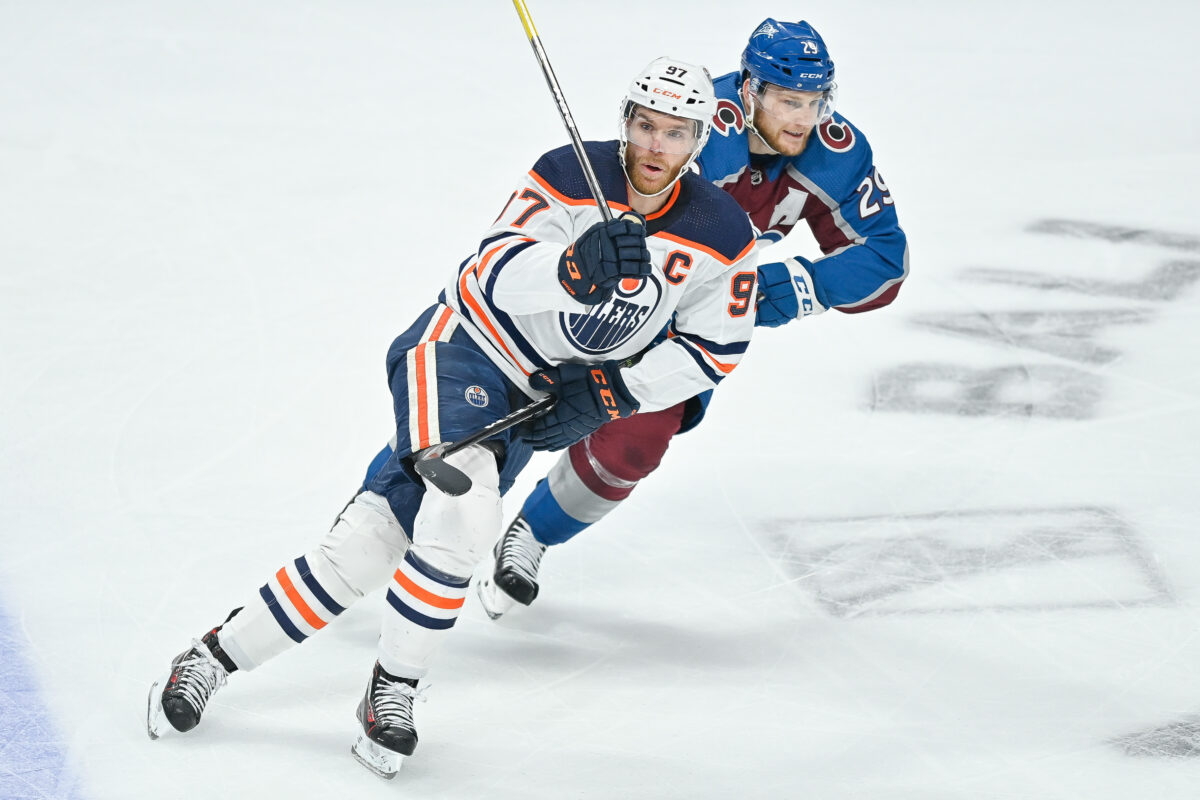
That made sense, seeing as how the theme of this era in Edmonton is speed and skill, yet they had one of the oldest active NHLers in Mike Smith between their pipes. Alongside him was a slightly younger, yet equally unreliable, Mikko Koskinen.
With neither able to match the output of Edmonton’s high-flying roster over the past few years, the Oilers decided it was time to head in another direction. One that took them east, where they were drawn to Jack Campbell’s record-setting success with the Toronto Maple Leafs. What’s more, being that he’s a full decade younger than Smith and seemingly playing through his prime as a newer NHL starter, Campbell appeared poised to maintain that level for years to come.
Helping his case was what he most recently accomplished, since having finally worked his way into a starter’s role more than a decade after being drafted. Before leaving Toronto, Campbell had earned a record of 51-14-9, along with a .916 SV%, 2.50 GAA, seven shutouts, and a positive GSAx/60. Results better than what Smith or Koskinen were providing capable of in Edmonton.
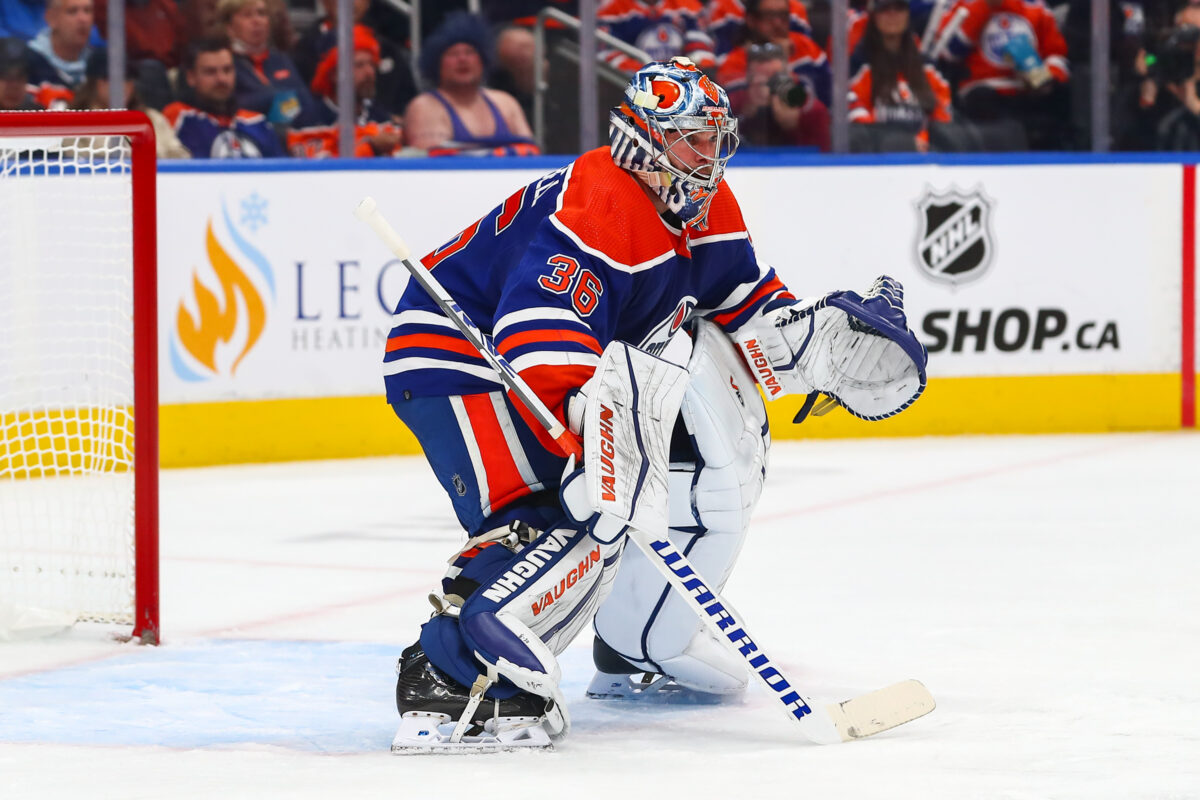
So, when the Maple Leafs failed to offer the all-star the type of extension he was after, Oilers’ GM Ken Holland was ready and waiting to overpay for his services. At $5 million per year through 2026-27, it seemed all the plans were in place to push Edmonton toward their first Stanley Cup Final since 2005-06.
“He looks to me like a guy that is getting better all the time,” Oilers general manager Ken Holland said of Campbell. “He’s competitive, he’s accountable and I think he’s 30 and from a goaltender’s standpoint, that’s a good age.”
Yet, Campbell’s play to this point has been anything but an upgrade for Edmonton and the Oilers have found themselves relying on Stuart Skinner more than anticipated. Justifiably so, as the 24-year-old’s .921 SV% and 2.78 GAA are far superior to Campbell’s .876 SV% and 4.15 GAA.
What’s worse, is that Campbell’s -0.750 GSAx/60 ranks last among goalies who have played at least 10 games to this point in 2022-23. Even he’s aware that it’s just not enough.
Edmonton isn’t an organization that can get away with a passive approach. Their history of winning won’t allow it, nor will the spotlight that blinds their market. It made sense for the Oilers to attempt a big offseason splash. What they got in Campbell, though, has barely been a sprinkle.
No one could have imagined how far Campbell would regress, especially since he moved from one contender to another. It’s as though he’s better suited to revert to a backup role with the Oilers, despite his salary suggesting otherwise.
Lots of NHL Action Remains in 2022-23
The problem isn’t that Talbot, Kuemper, or Campbell are among the league’s worst, it’s that they are currently far from competing with the best. Safe to say, their new GMs didn’t acquire them with the hopes of achieving mediocrity. Such results are, in many ways, a failure for these respective franchises.
Regardless of their lacklustre efforts thus far, they will undoubtedly attempt to do whatever possible to regain a more glowing reputation. There is plenty of hockey left to be played this year, after all. However, whether any of them can accomplish such a feat after falling so hard this abruptly is yet to be seen. Basing their potential on the trends each has set early on in the campaign doesn’t do them any favours, either.
What we do know for certain, though, is that Talbot, Kuemper, and Campbell simply haven’t performed as advertised to this point. Failing to impress to such a degree that this trio has to be considered among the worst acquisitions from this past offseason.
RELATED: Marc-Andre Fleury’s Case as a Hall of Famer
Fortunately, such setbacks can be temporary — there’s always next year. We’ll just have to wait and see if Ottawa, Washington, and Edmonton are willing to wait that long in anticipation of their desired results.
